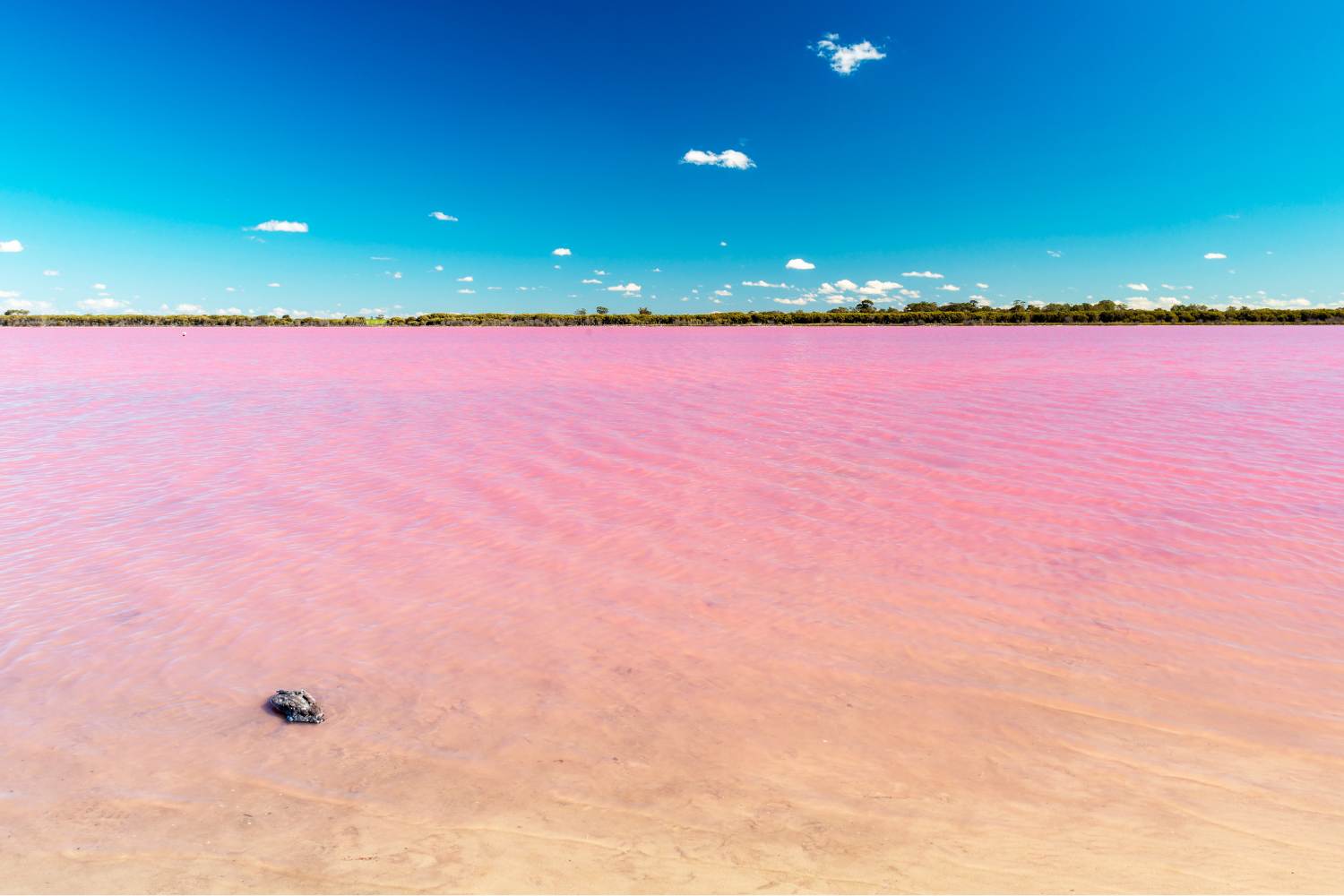Kazakhstan’s pink Lake Kobeituz, once nearly destroyed by overtourism in 2020, has reopened under strict protections as the country bets on sustainable tourism and global recognition.

@Kobeituz
Just two hours from the capital Astana, in the Akmola region, lies one of the planet’s most surreal natural wonders. Lake Kobeituz, also known as Kazakhstan’s pink lake, transforms the steppe into a canvas where colors shift from pale rose to deep crimson. It looks less like something you’d stumble upon in Central Asia and more like a mirage from another world.
The shallow saltwater basin, sitting at 830 feet (253 meters) above sea level, owes its mesmerizing hue to the microalga Dunaliella salina. When temperatures rise and evaporation intensifies, the salinity spikes. In response, the algae produce carotenoids, pigments that dye the water in shades most painters could only dream of mixing. The phenomenon is rare, found only in a handful of other places worldwide, like certain lakes in Australia and Kenya.
The name and the walk on pink ice
The very name of Kobeituz tells its story. In Kazakh, “kobei” means to multiply, while “tuz” translates as salt. Local people chose it because of the abundance of white crystals coating the shores when the water recedes. The lake itself is astonishingly shallow — no more than 8 inches (20 cm) deep — so walking across it feels like gliding over pink ice, with the salt clinging to boots like fresh snow.
The crisis of 2020
The summer of 2020 marked a turning point, and not a happy one. As lockdowns shuttered most tourist attractions, Kobeituz went viral on social media. Suddenly thousands flocked to what had once been a quiet and nearly forgotten lake, turning it into Kazakhstan’s most photographed spot.
Things quickly spiraled. Cars were driven onto the fragile lakebed for dramatic shots. Buckets and bags of salt were scooped up by visitors, many convinced by online rumors that these minerals could cure Covid-19. On July 18, an Instagram user warned that “more than half the visitors were collecting the salt that creates the pink glow, ignoring signs that explained this could strip the lake of its unique properties for over fifteen years.” Within days, local authorities had no choice but to close Kobeituz, sealing it off to protect its fragile ecosystem.
The rebirth and tourism boom
Years later, Kobeituz has reopened — cautiously. Strict new rules are in place: no collecting salt, mud, or sand, and not a scrap of litter is tolerated. Visitors are free to marvel again, but under the constant reminder that even the smallest action has consequences.
This revival couldn’t have come at a better time for Kazakhstan’s tourism industry. In the first half of 2025 alone, the country welcomed more than 7.5 million visitors, an increase of 600,000 compared to the same period in 2024. The government has set its sights on attracting 15 million tourists annually by 2029, with an expected revenue of $10.8 billion (€10 billion).
Investment has followed this ambition. In 2024, tourism spending rose by 20%, reaching $1.7 billion (€1.6 billion), while a hundred new hotels opened their doors. Revenues jumped 30%. The government has even introduced the Neo Nomad Visa, which allows citizens of 48 countries to live and work in Kazakhstan for up to a year — a move clearly designed for the global wave of digital nomads.
Future perspectives
Kazakhstan is also making a bid for global recognition. The country already boasts six UNESCO World Heritage Sites — including the Mausoleum of Khoja Ahmed Yasawi, the Tamgaly petroglyphs, and a portion of the ancient Silk Road known as the Chang’an-Tianshan Corridor — and is pushing eleven more candidates for 2026. As Prime Minister Olzhas Bektenov recently stated: “These are our national treasures. We must turn them into tourist attractions, so the world can know them.”
Kobeituz is the perfect emblem of this philosophy: a fragile treasure to be protected and shared responsibly. The challenge is striking a balance between the irresistible urge to showcase it to the world and the duty to preserve it for those yet to come.
